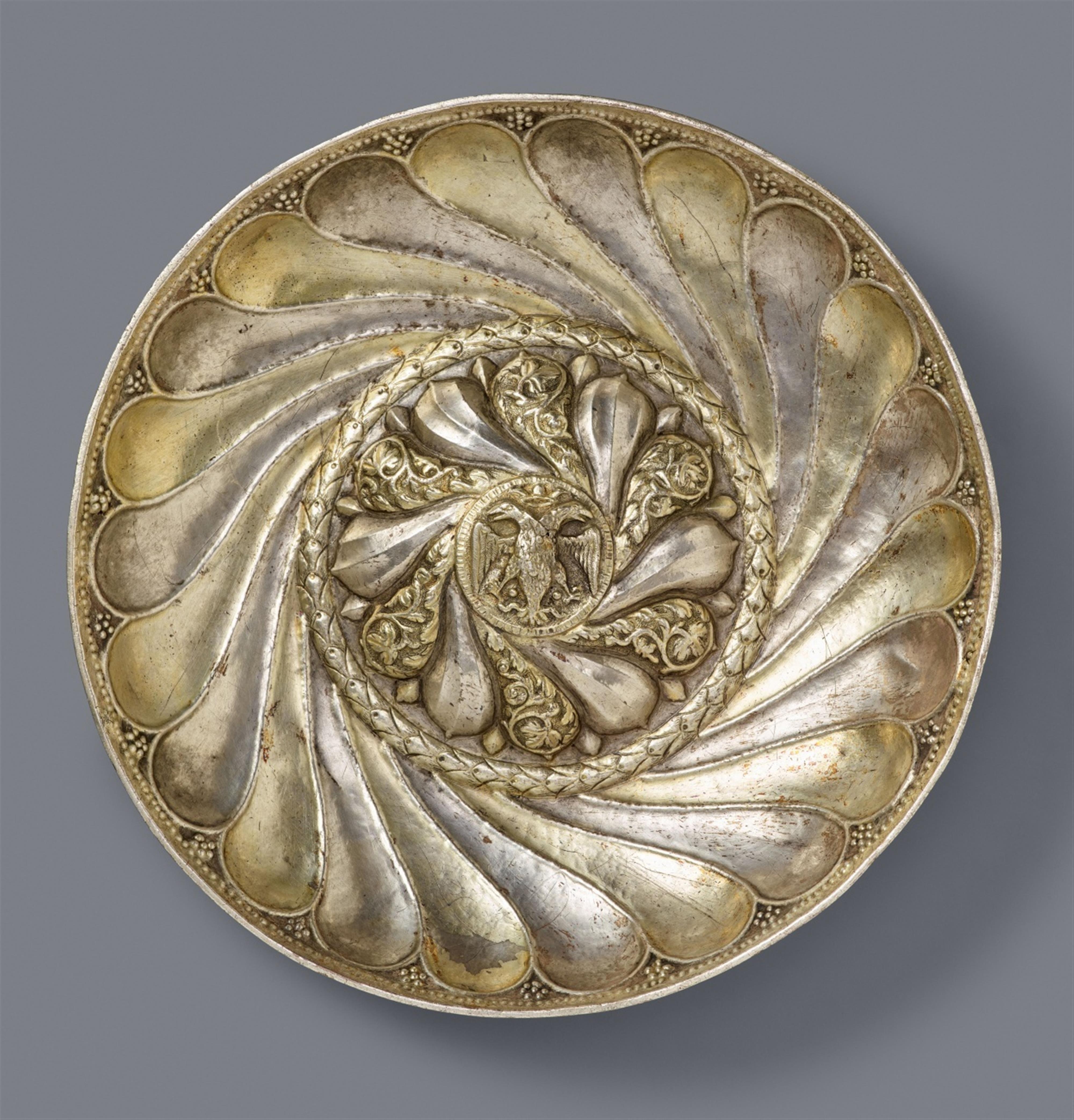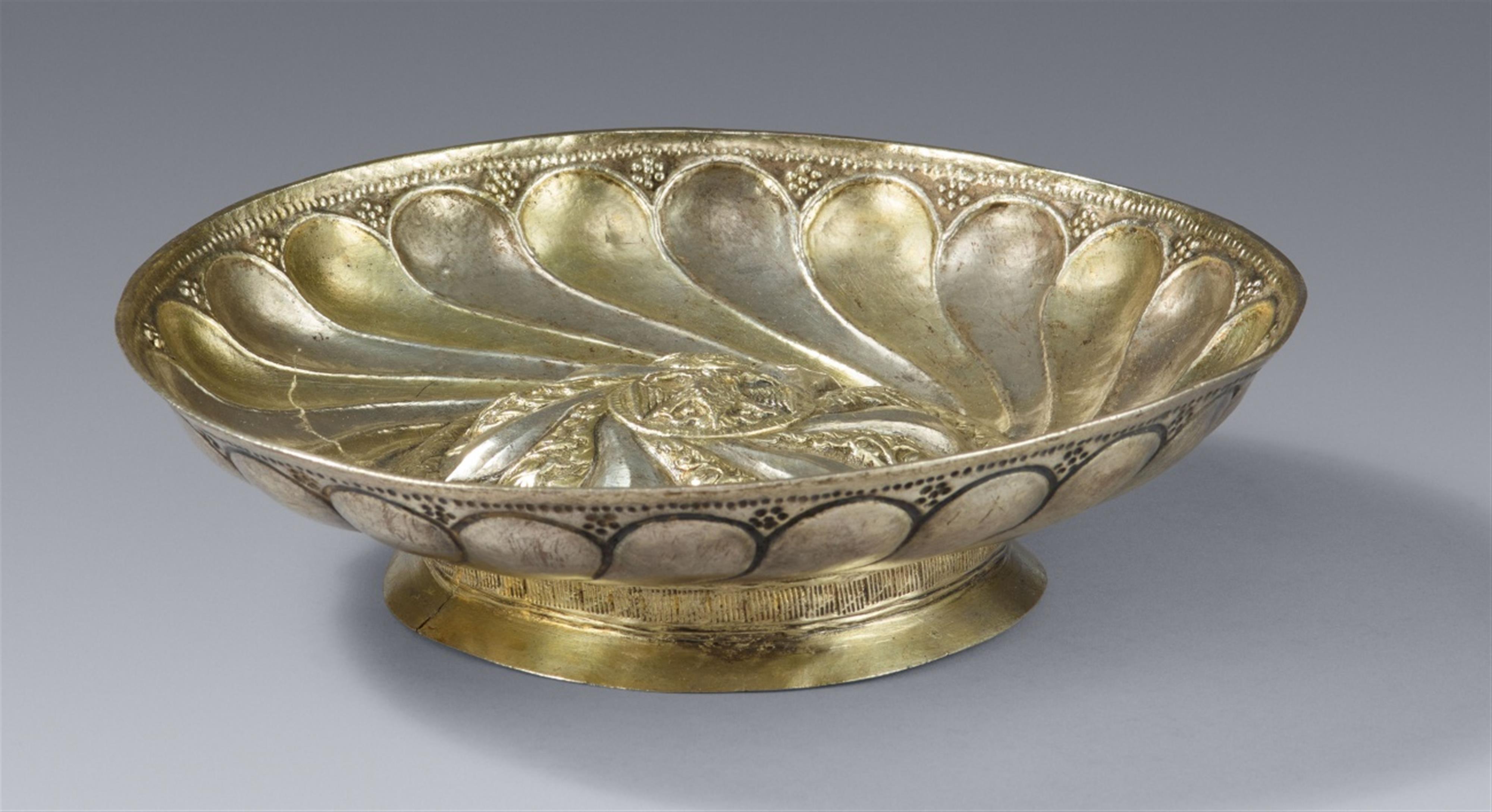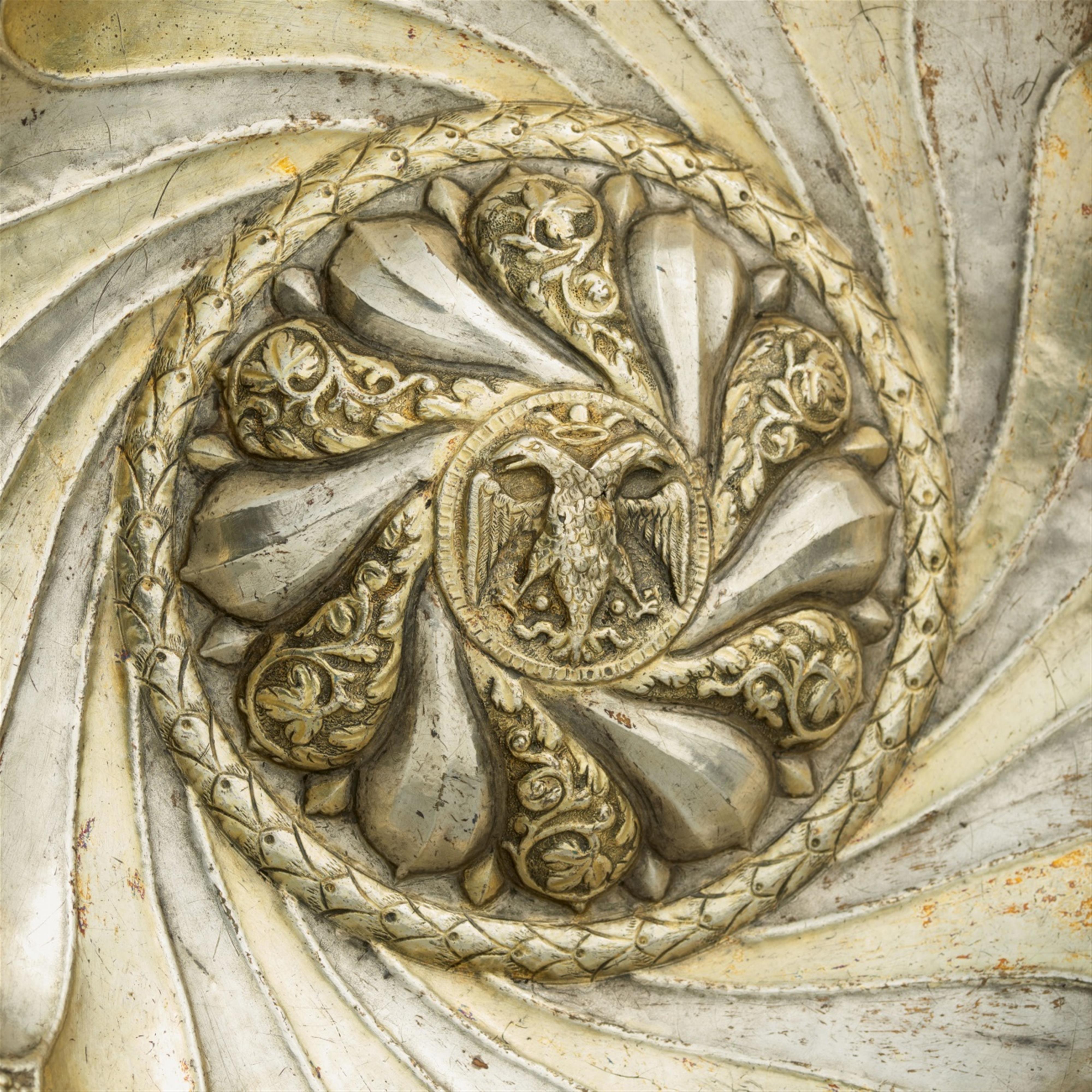A late Gothic silver tazza with the Imperial Eagle
Footed dish with a finely fluted basal ring. The outer surface with embossed fish bladder tracery and stylised flowers formed from six stamped dots in the spandrels under the rim. The inner lip with a band of embossed beading. The central raised node formed from opposing fish bladder motifs with alternating faceted and foliate relief decoration. The centre emblazoned with the double-headed eagle in relief and surrounded by a raised laurel wreath. H 6, D 23.3, weight 383 g.
Venice, late 15th / early 16th century.
So-called omphalos bowls, bowls with a raised node or “navel” in the centre, have been produced since Greek antiquity. In this example, the omphalos motif is framed by swirling "fish bladder" tracery. This ornament probably originally came to Europe from India or Persia, where it can be found in Celtic art as early as the La Tène period. In the Middle Ages it was disseminated throughout Central Europe in book illustrations and was often used in the window tracery of late Gothic churches. This form of squat stem bowl also has ancient origins. The name "tazza" refers to its use as a drinking vessel – the word is actually of Arabic origin, but it was eventually transformed into the German word for cup, “Tasse”.For centuries, Venice was one of the main centres in which the cultural influences of Europe and Asia would blend. Venice thrived on trade, but also on its fabulous artistic production, which in turn owed much of its richness to the city's wealth and diverse inspirations. This type of bowl in a late Gothic style came into fashion in Venice in the 15th century. The first models were presumably produced in parcel gilt silver, but after around 1500, they were also made from embossed and enamelled copper. Various forms of enamelled decoration were used, in both vitreous and painted techniques.
A less precious variation of the design without the base was produced at around the same time north of the Alps. These dishes, known as “Beckenschlägerschüssel” (basin beater bowls), were made from brass, an alloy with a high copper content.
Literature
Cf. the smaller gadrooned bowl with a hunting motif attributed to Venice 1480 – 90 in the Victoria & Albert Museum London, on loan from the Rosalind and Arthur Gilbert Collection (acc. no. LOAN:GILBERT.544-2008). Cf. ibid. a further bowl, also attributed to Venice 1480 – 90, acc. no. 274-1881. Cf. ibid., a copper bowl with polychrome enamel decoration attributed to Venice 1500 – 1550, acc. no. C.2378-1910.






